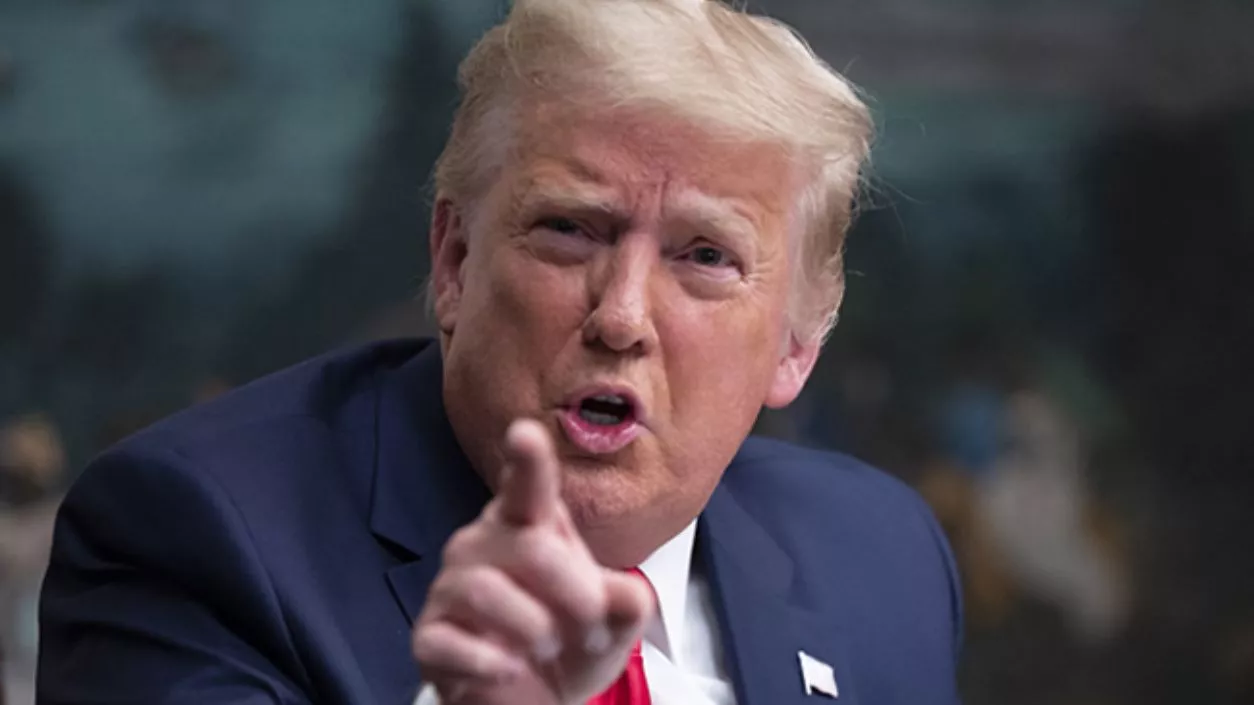.gif)
.gif)

U.S. President Donald Trump has reiterated his threat to impose 100% tariffs on BRICS nations—Brazil, Russia, India, China, and South Africa—if they attempt to replace the U.S. dollar as the global reserve currency. In a post on his social media platform, TruthSocial, Trump stated that the U.S. would require a commitment from BRICS countries not to create a new BRICS currency or support any other currency that would replace the U.S. dollar. He emphasized that any country pursuing this goal would face severe economic consequences, including a ban on their goods entering the U.S. market.
The BRICS bloc has been discussing ways to reduce its reliance on the U.S. dollar for trade, especially in the wake of geopolitical tensions and economic sanctions. Russia, in particular, has been pushing for de-dollarization, advocating for the use of local currencies in trade between BRICS nations. This idea gained traction during the 15th BRICS summit in 2023, where Russia’s President Vladimir Putin called for the creation of an alternative to the dollar. In addition, at the BRICS foreign ministers' meeting in June 2024, members discussed the possibility of using local currencies in both bilateral and multilateral trade.
Despite these discussions, the U.S. dollar continues to dominate global finance. According to data from the International Monetary Fund (IMF), the U.S. dollar accounts for approximately 59% of global foreign exchange reserves as of 2024, far ahead of other currencies like the euro or the Chinese yuan. This enduring dominance of the dollar is reflected in the continued use of the U.S. dollar in international trade, despite ongoing efforts by countries like Russia and China to reduce their reliance on it.
Trump’s threat of 100% tariffs underscores the U.S. administration’s commitment to preserving the dollar's position as the world’s primary reserve currency. The U.S. president's rhetoric highlights his administration’s view that any attempt to weaken the dollar's status could undermine global economic stability. The 100% tariff threat is meant to deter BRICS nations from supporting any such alternative currency proposals and to preserve the current international financial system, which is heavily reliant on the U.S. dollar.
India, while part of the BRICS grouping, has maintained a more cautious stance on the issue of de-dollarization. India has engaged in discussions about reducing reliance on the U.S. dollar but has not supported the creation of a BRICS common currency. India’s former Reserve Bank of India (RBI) Governor Shaktikanta Das and External Affairs Minister S. Jaishankar have repeatedly stated that India does not seek to replace the U.S. dollar. Instead, India has promoted the use of local currencies, such as the Indian rupee, in trade agreements, especially with neighboring countries.
Beyond the BRICS matter, Trump has implemented tariffs as part of his broader trade policies. The U.S. has imposed tariffs on several countries, including China, and recently announced a 25% tariff on Canada and Mexico, set to take effect in February 2025. These tariffs are aimed at addressing issues such as illegal immigration and the trafficking of opioids, including fentanyl. Should Trump follow through with his 100% tariff threat on BRICS nations, the move would likely result in significant disruptions to global trade, affecting both U.S. imports and exports, and leading to higher prices for consumers worldwide.
In conclusion, Trump's warning to BRICS nations reflects ongoing tensions over the dominance of the U.S. dollar in global finance. Despite the push for alternatives within the BRICS bloc, the U.S. remains committed to ensuring the dollar’s continued role in the global economy, with the threat of tariffs serving as a clear signal to countries considering alternatives.